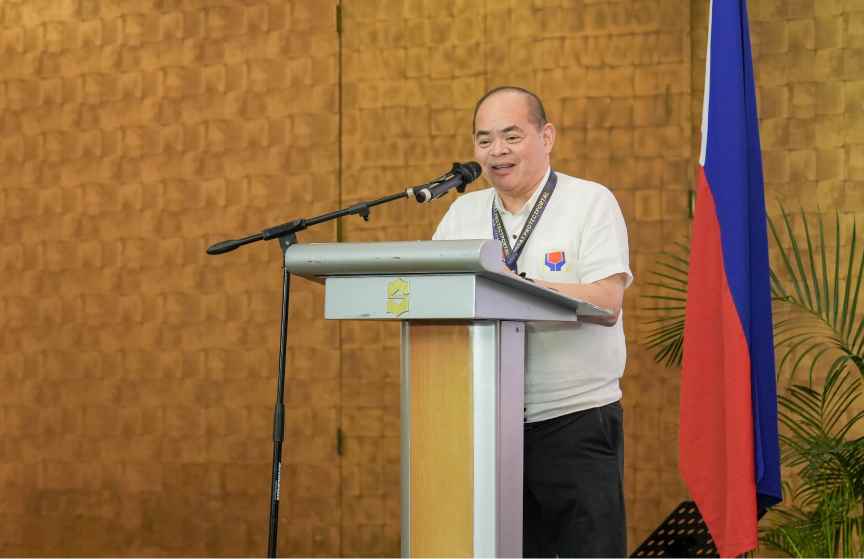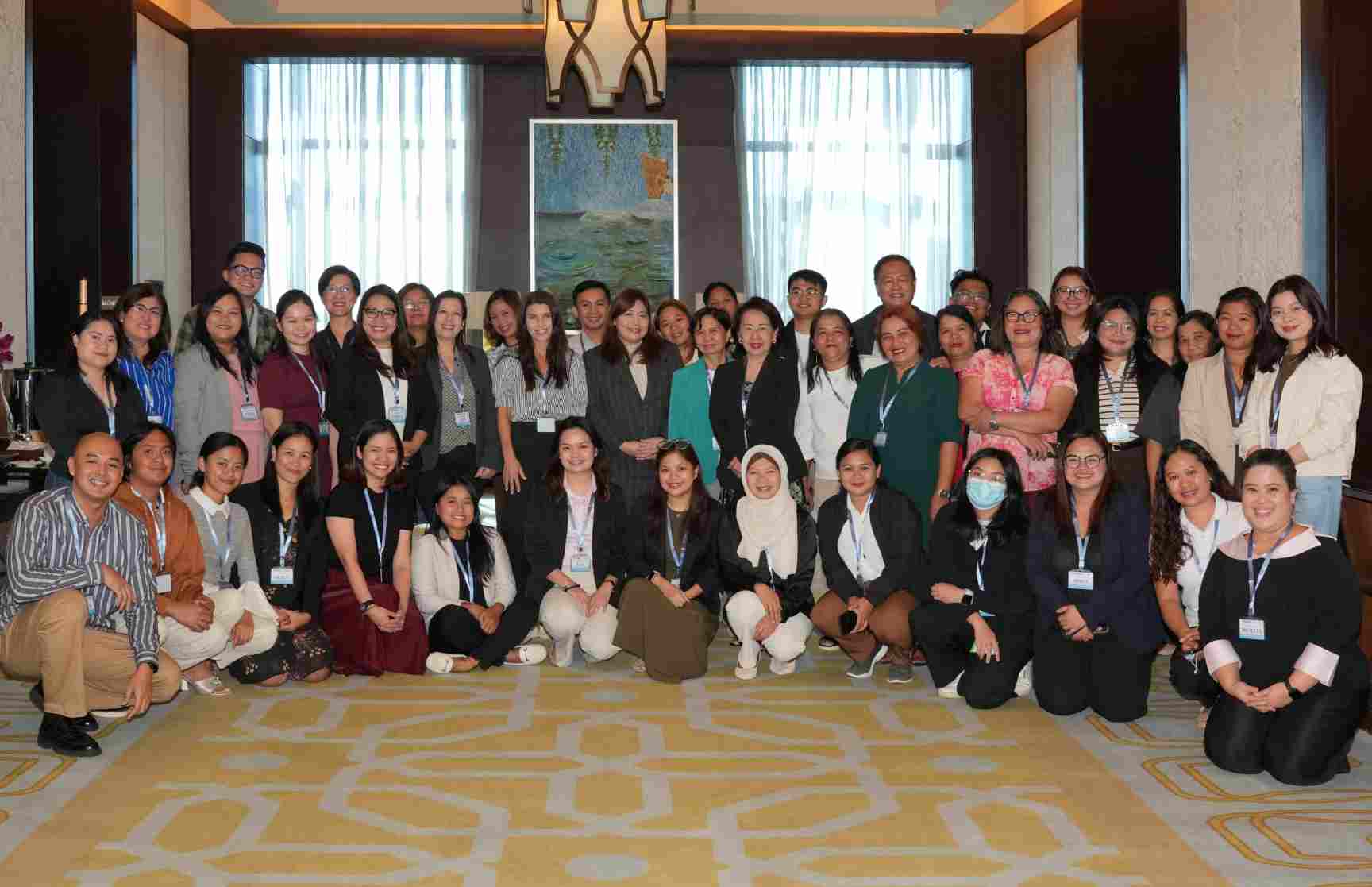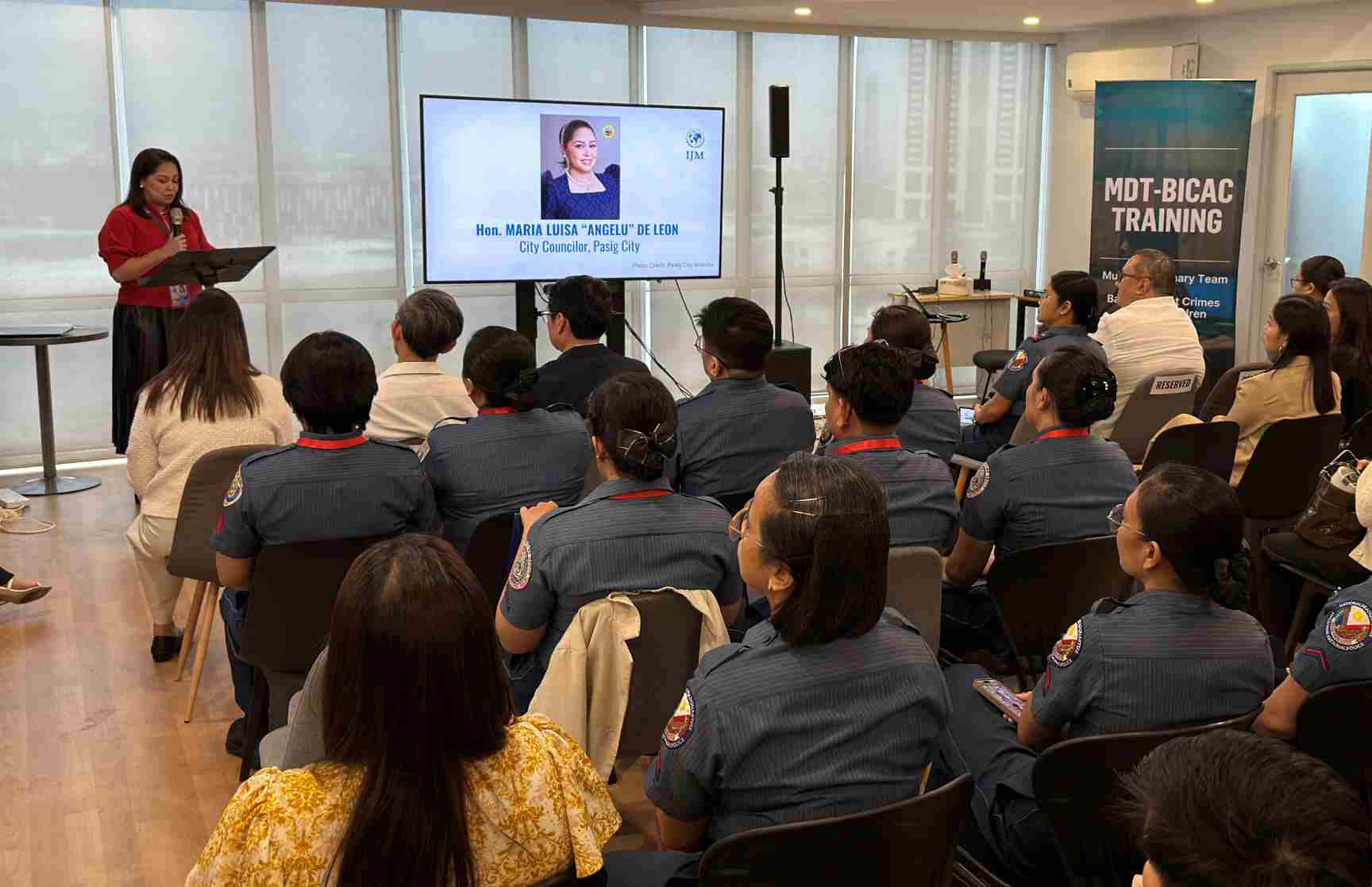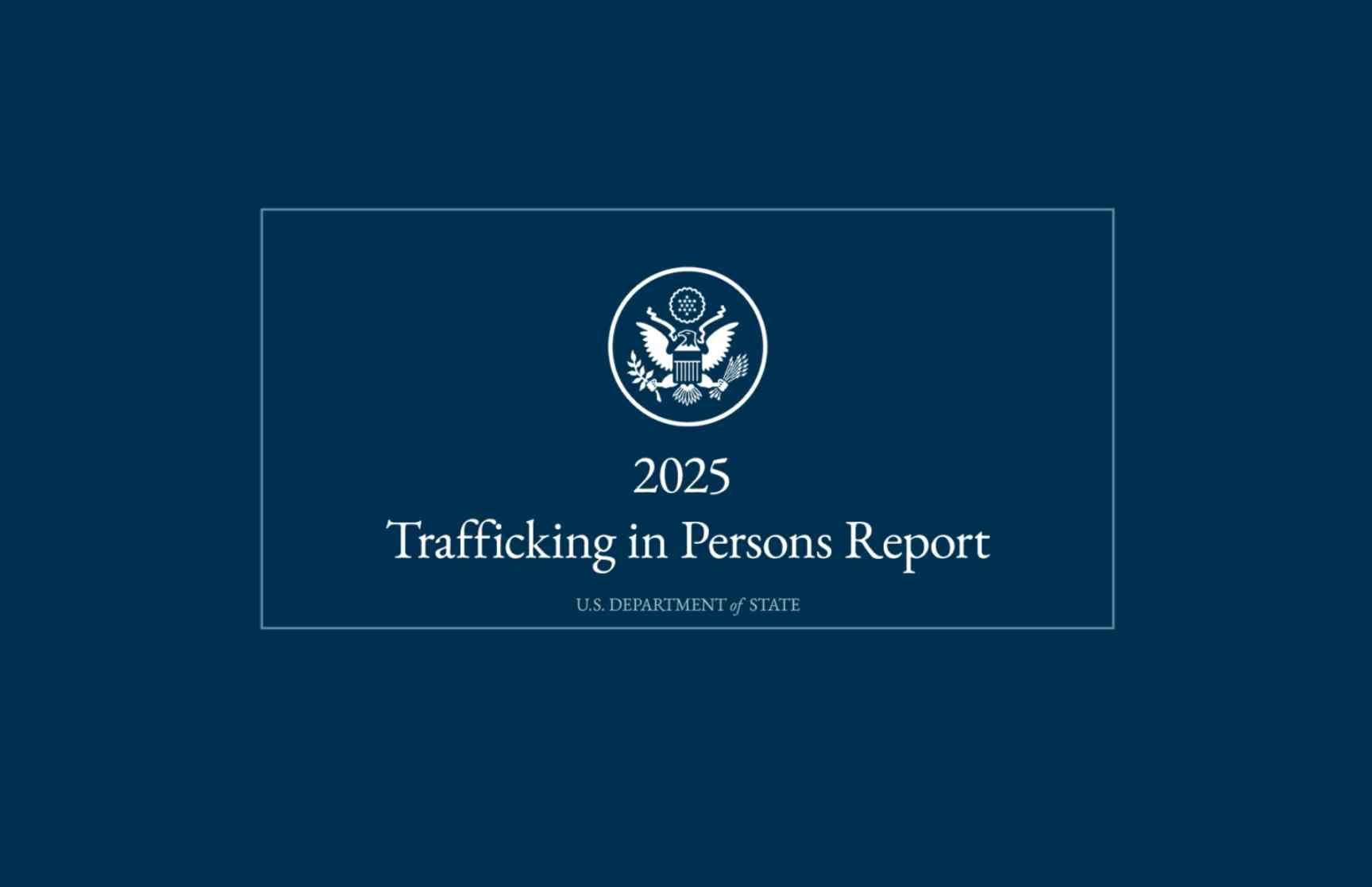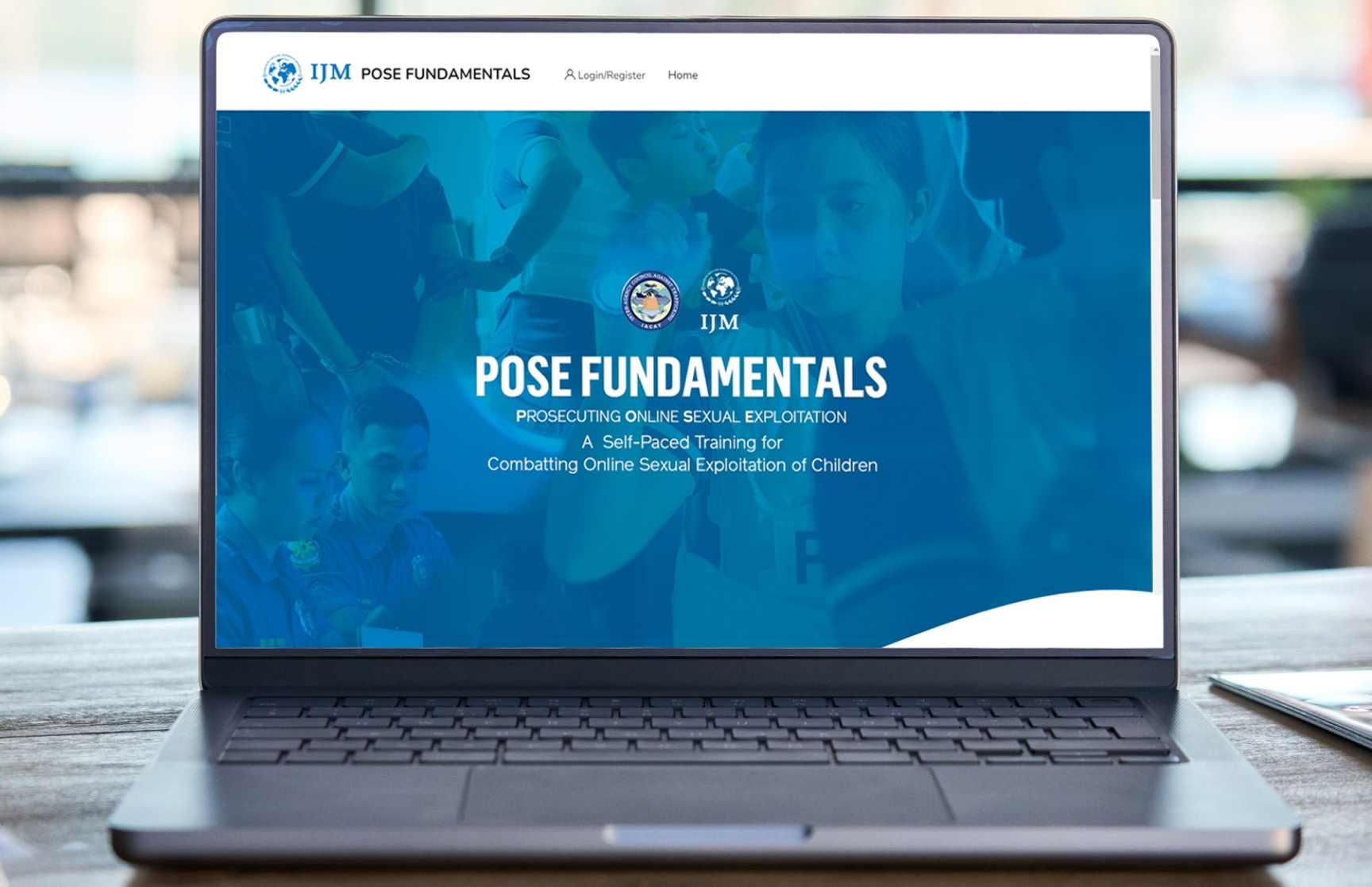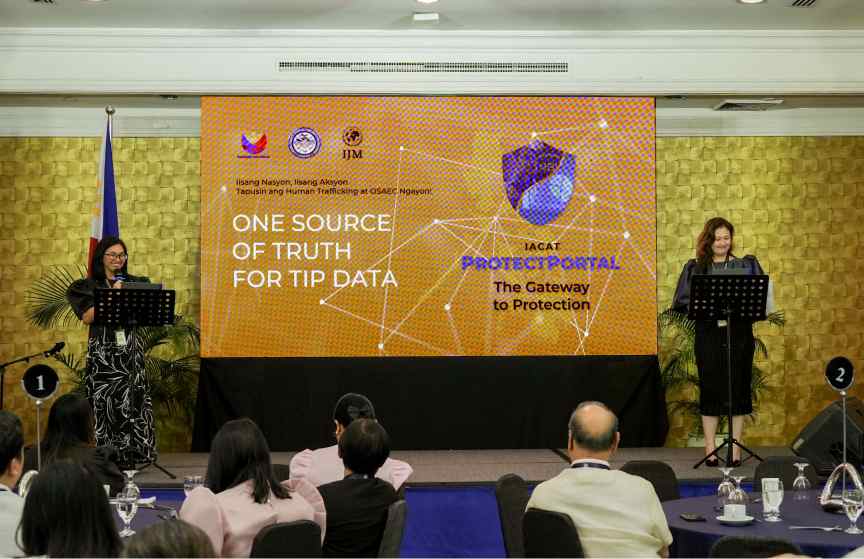
On September 25, 2025, leaders from the Philippine government, law enforcement, and civil society gathered at EDSA Shangri-La Hotel Manila to mark a milestone in the country’s fight against human trafficking: the launch of the IACAT ProtectPortal, a dynamic digital platform designed to centralize and harmonize data on Trafficking in Persons (TIP).
The Need for Data Harmonization
In the fight against human trafficking, data is essential. It guides case management, informs policy, and helps agencies allocate resources where they’re needed most.
With multiple agencies working against trafficking, each agency has its own system of collecting, labeling, and storing data. Frontliners, lawmakers, and collaborators make use of several data management platforms as their sources of data.
This is where data harmonization comes in. The various TIP data can be harmonized – or unified – in one platform, showing the full picture of TIP in the country. At this stage in the fight against trafficking, the availability of this data speeds up the response and supports strategic planning. A platform for data harmonization will be a game-changer in the fight against human trafficking.
The Solution: IACAT ProtectPortal
IACAT ProtectPortal is the government’s answer to this challenge. A partnership between Inter-Agency Council Against Trafficking (IACAT) and IJM, the IACAT ProtectPortal is a centralized, integrated, and continuously updated platform that brings together data from multiple case management and information systems in the Philippine government. “A living portal,” built to grow and develop as more data becomes available and through continuous learning and collaboration.
This harmonization fulfills the mandate of Section 16-A of the Anti-Trafficking in Persons Act, which calls for a central database to support inter-agency collaboration and reporting. Section 16-A was inserted into the original law, Republic Act No. 9208, through the Expanded Anti-Trafficking in Persons Act of 2012 (Republic Act No. 10364). The provision was further reinforced by the Expanded Anti-Trafficking in Persons Act of 2022 (Republic Act No. 11862)
“This is the Philippine government’s central gateway to protection and response. We have achieved incredible progress in our fight against trafficking in persons, which has been recognized globally. But we still have more work to do. This data management tool would help us accelerate our efforts to protect our communities, especially children, from exploitation,” said Department of Justice (DOJ) Undersecretary Nicholas Felix Ty, Undersecretary-in-Charge of the DOJ Inter-Agency Council against Trafficking (IACAT).
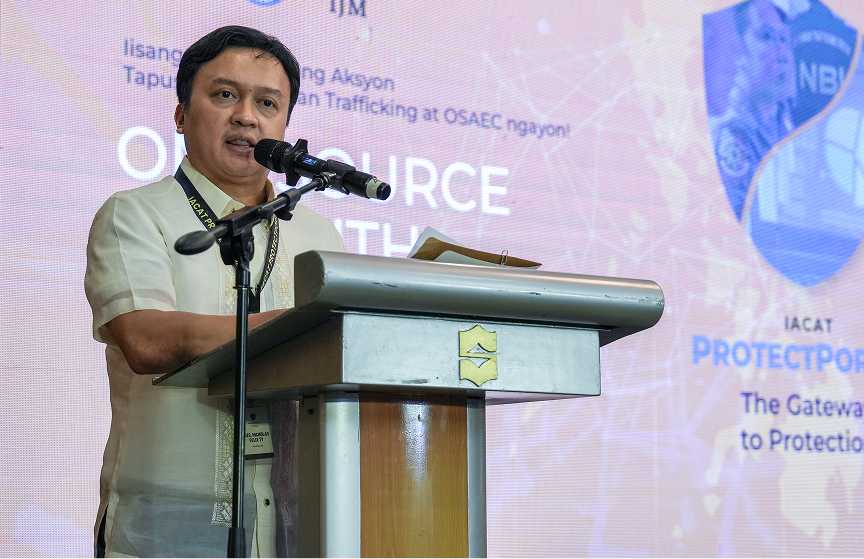 IACAT Undersecretary Nicolas Felix Ty
IACAT Undersecretary Nicolas Felix Ty
A Power Tool for Law Enforcement and Policymakers
The IACAT ProtectPortal is more than a database—it’s a power tool. With interactive dashboards, heatmaps, and real-time analytics, it provides users with actionable insights into TIP trends across the country. Agencies can now monitor data such as:
- Geographical hotspots
- Operation and arrest of perpetrators
- Conviction rates and case outcomes
- Victim profiles and victim compensation data
- Gender Equality, Disability and Social Inclusion (GEDSI)
This level of visibility empowers frontline officials and policymakers to respond faster, plan smarter, and allocate resources more efficiently.
“If we have that level of information at the tip of our fingers, we know what actions to take, what to prioritize in terms of coming up with solutions. Our government partners will be equipped and empowered,” says Ms. Anne Leslie Garcia, Director of MERL (Monitoring, Evaluation, Research, and Learning) IJM.
Revolutionizing the Fight Against Trafficking
Designed to empower law enforcement and policymakers with real-time analytics and critical insights, the IACAT ProtectPortal is set to revolutionize how the country combats trafficking.
The launch of the IACAT ProtectPortal marks a turning point in the Philippines’ anti-trafficking efforts. It transforms how agencies work together, how data informs decisions, and how justice is pursued for victims.
Atty. Rosemarie Ayos-Lujero, Senior Lead, Criminal Justice System, MERL at IJM emphasized:
“Data speaks. Data is powerful. It helps us analyze trends, understand the problem, and provide solutions. In this era of technology and digitalization, where traffickers prey upon innocent victims and exploit vulnerable individuals, we should be two steps ahead in leveraging these tools to combat human trafficking in the Philippines."
In this era of technology and digitalization, where traffickers prey upon innocent victims and exploit vulnerable individuals, we should be two steps ahead in leveraging these tools to combat human trafficking in the Philippines.
IACAT ProtectPortal – The Next Chapter
With Phase 1 now underway—focused on full implementation, continuous training, and sustainability, the next phase will center on designing a victim- and survivor-centered case management system, ensuring that the portal not only tracks cases but also supports those most affected by trafficking.
Iisang Nasyon, Iisang Aksyon, Tapusin ang OSAEC Ngayon
The launch event was attended by key government officials with messages of support from IACAT Undersecretary Nicolas Felix Ty; PBGen Maria Sheila T. Portento, Acting Chief of the PNP - Women and Children Protection Center; Atty. Antonio M. Pagatpat, Deputy Director for Operations of the National Bureau of Investigation; Atty. Hannah Lizette S. Manalili, Executive Director III, IACAT Secretariat; and Assistant Secretary Paul Ledesma, Assistant Secretary for Regional Operations under the Operations Group of the Department of Social Welfare and Development (DSWD).
Ms. Desiree Ann Sumalinog-Fantonalgo, Project Development Officer IV, IACAT Secretariat presented a demo of the portal alongside Ms. Anne Leslie Garcia, Director of MERL (Monitoring, Evaluation, Research, and Learning), IJM.
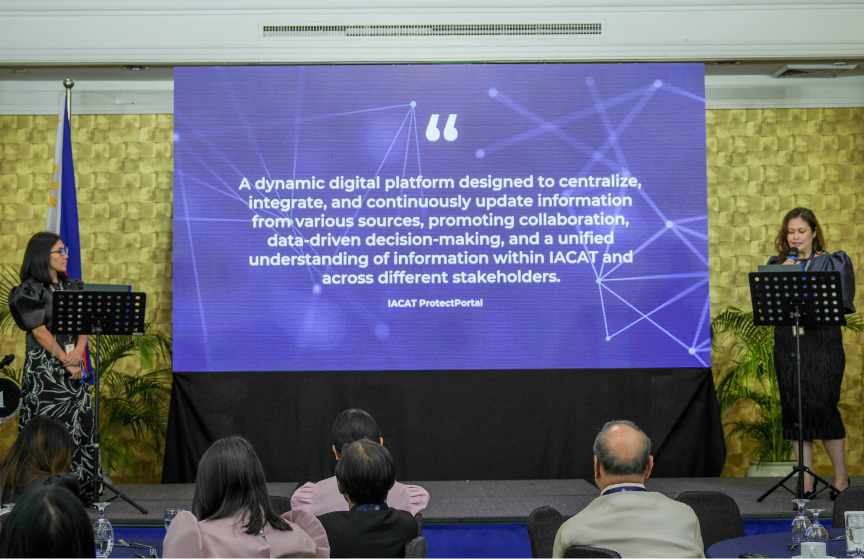
Also present were Atty. Emmeline Aglipay-Villar, IACAT ProtectPortal Champion and Former Undersecretary of DOJ; Chief Rosalie Laguardia of the Human Trafficking Division of the National Bureau of Investigation; Usec. Felipe Egargo of the Department of Labor and Employment; and Usec. Ma. Arlene Borja from the Commission on Filipinos Overseas (CFO).
One of the key moments of the IACAT ProtectPortal gathering was when trafficking survivor and now survivor leader Ms. Patricia Montano addressed everyone in the room:
“When I was trafficked, I felt like I had disappeared from the world. I was reduced to a number, a transaction, a statistic. But today, I stand here not as a number—but as a person. And this protect portal, this platform, is a powerful symbol that our government is listening. It tells us that we are no longer just reacting to trafficking after it happens—we are now working to prevent it. We are gathering data, analyzing patterns, and building systems that protect the vulnerable people before they are harmed.”
Patricia invited the leaders and dignitaries to join her onstage to stand united in the fight against trafficking, and in using the IACAT ProtectPortal to end trafficking.
“Iisang nasyon, iisang aksyon, tapusin ang human trafficking at OSAEC ngayon!” they said, in one voice.
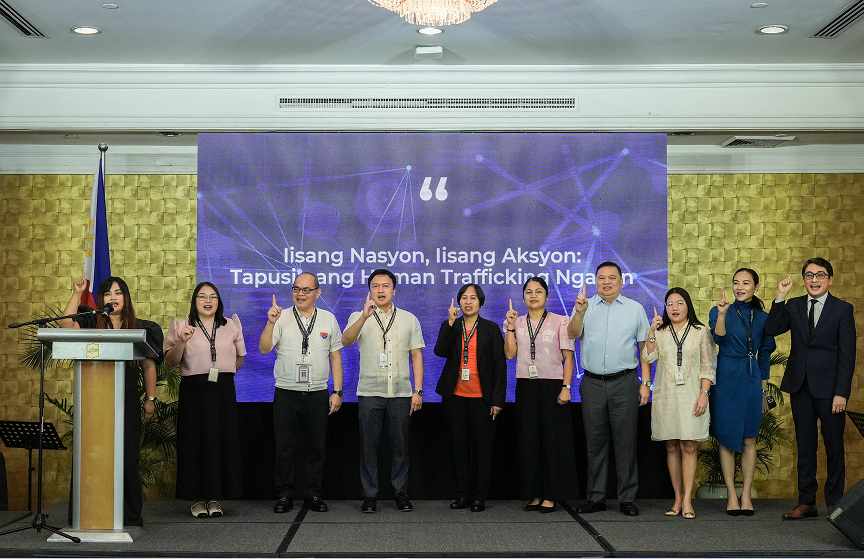
“Let us work together to build a Philippines where no one is ever sold, bought, or abused,” Patricia said. “Where every person is protected, valued, and empowered. Let this portal be more than a system—let it be a movement. A movement toward justice, healing, and transformation.”
Watch the recording of the IACAT ProtectPortal at the IACAT Facebook Page.
See the event highlights:
